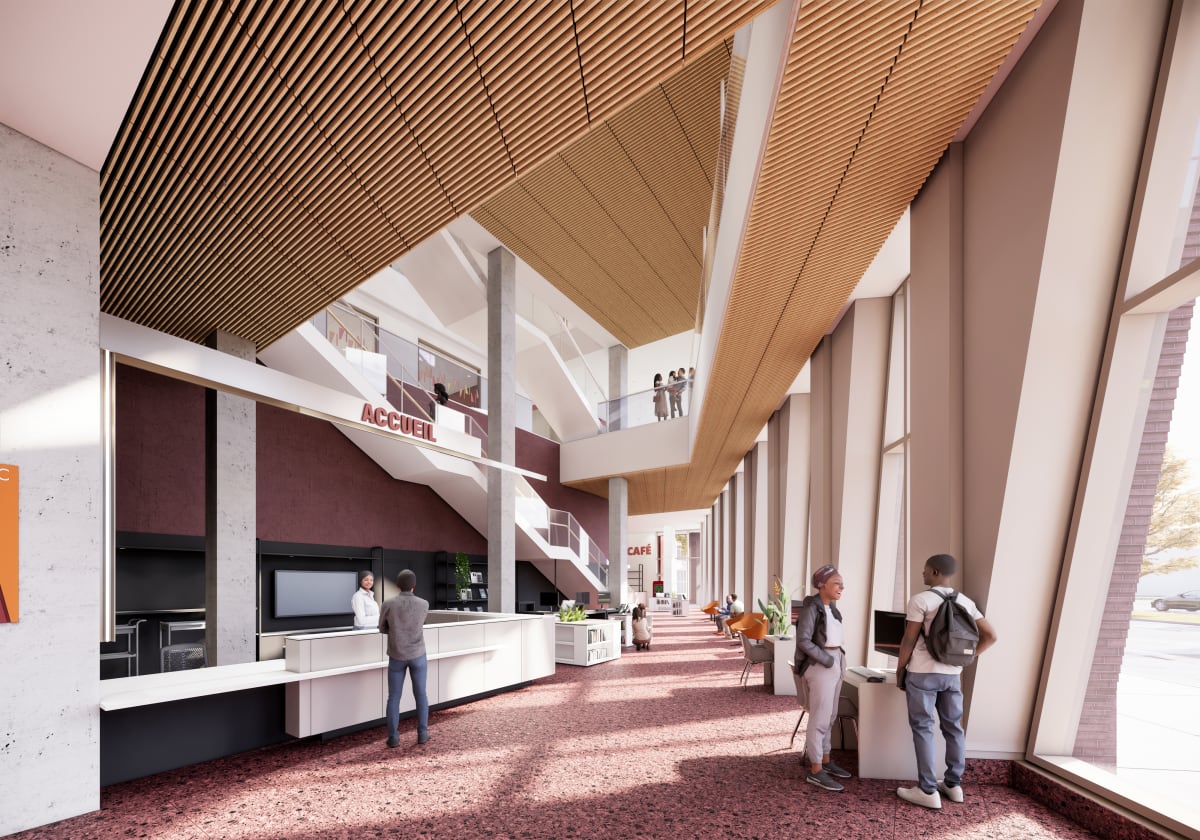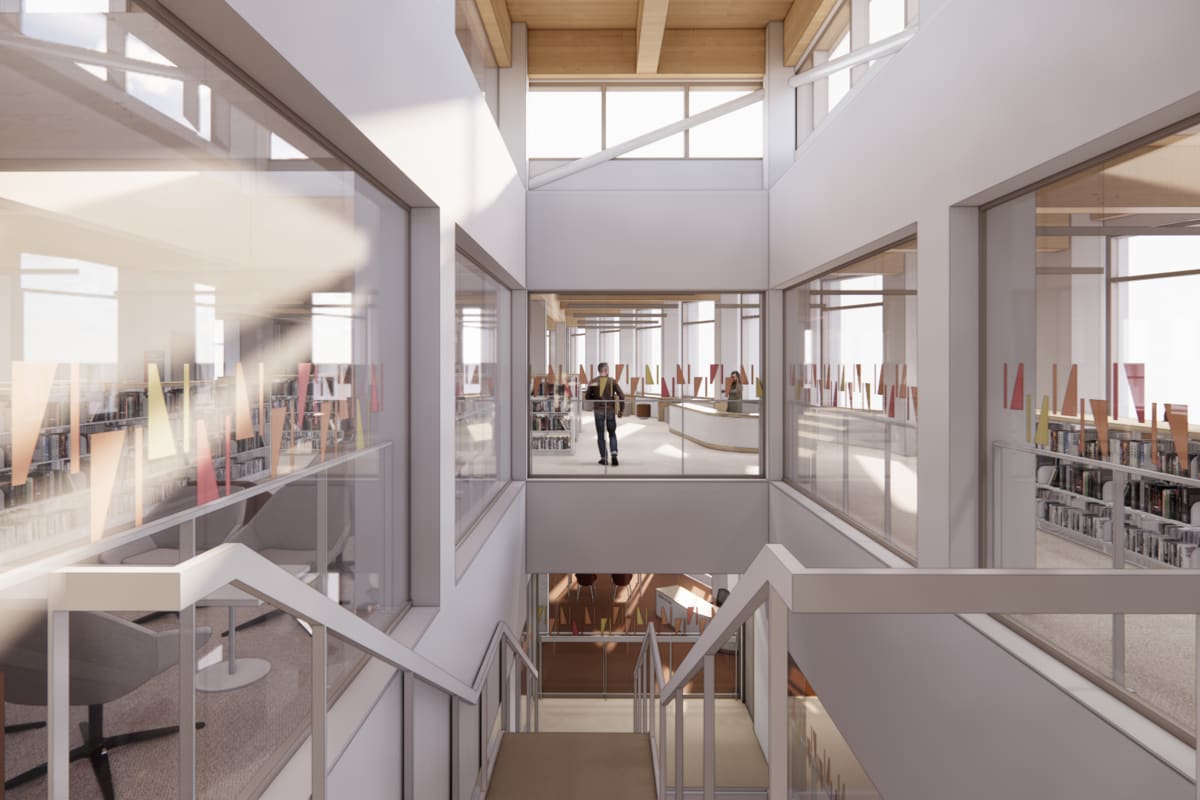Bibliothèque et espace culturel du Cœur-Nomade
A library and cultural and socio-community space will open its doors in 2026, on a site shared by Ahuntsic-Cartierville and Montréal-Nord.
This welcoming, inspiring space is a great place to learn, explore, experiment, create, and meet people. The Cœur-Nomade library and cultural space will also offer programming that promotes intercultural and intergenerational exchanges.
Description of the project
This project involves the construction and development of a building with a surface area of approximately 3,900 m2. It will feature a library, a cultural space and a socio-community space. It will host outreach, learning, and creation activities, along with amateur and professional artistic activities.
Situated where Ahuntsic-Cartierville meets Montréal-Nord, the venue will be built on a vacant lot at the corner of Boulevard Henri-Bourassa Est and Avenue Oscar. Cœur-Nomade will thus be located on the most important east-west street in the north of the city, within easy reach of schools, daycare centres, seniors’ residences, public parks, and bicycle and pedestrian networks.
Objectives
Cœur-Nomade will become an important cultural and community hub. It is almost the only one of its kind in the area. The space will greatly improve residents’ quality of life. It will meet the specific needs of a diverse clientele, notably by promoting social and digital inclusion.
Cœur-Nomade’s mission focuses on the human scale. This centre is intended to be a place for informal and friendly meetings. People who do not usually visit cultural spaces and libraries will be able to develop new habits once they discover the centre and its offerings.
Beginning of work
Work will begin in 2024 and end in 2025. The library and inter-borough cultural space is scheduled to open in 2026.
Winners of the multidisciplinary architectural competition
Affleck de la Riva architectes/Coarchitecture in collaboration with ARUP, Martin Roy & associés, François Courville Paysage and Espace Mushagalusa are the winners of the multidisciplinary architectural competition launched in spring 2021.
Their project, “L’arbre qui marche,” (The Walking Tree) reflects the Cœur-Nomade’s philosophy, which is to create a dynamic, inspiring and welcoming space. The site will be bright and lively: A true cultural escape for Montrealers.
The winner’s proposal is fully aligned with Montréal’s Agenda 2030 for Quality and Exemplarity in Design and Architecture by harnessing sustainability, creativity and innovation to advance the ecological and social transition.
Discover some of the facilities that will be offered:
Impacts du chantier
Consultez Info-travaux
Agent de liaison
Tout au long du projet, un agent de liaison assurera un service de proximité dans les 2 arrondissements et recueillera les commentaires. Vous pourrez le contacter au 514 953-1671 ou au 311.
Un bâtiment écologique
En plus d’être accessible universellement, il inclut les grands principes de développement durable et de transition écologique de la Ville de Montréal et de l’Agenda montréalais 2030. Le projet vise l’accréditation LEED® Or. Pour ce faire, la conception a été développée de façon à réduire l’empreinte écologique et optimiser la consommation d’énergie avec intégration de la géothermie, d’une enveloppe performante, de la lumière naturelle et deux bornes électriques pour les usagers.
Découvrez quelques-uns des aménagements qui vous seront offerts :
Credit: Affleck de la Riva architectes/Coarchitecture in collaboration with ARUP, Martin Roy & associés, François Courville Paysage and Espace Mushagalusa
Choice of the name “Cœur-Nomade”
This poetic name refers to Dany Laferrière’s work “Vers d’autres rives” (toward other shores). It reflects the legacy of diversity and the author’s exceptional contribution to developing the community. The Cœur-Nomade evokes a place of passage where people with diverse backgrounds converge.
The Cœur-Nomade library and cultural space project is funded under the agreement on the cultural development of Montréal reached between Montréal and the Government of Québec.
To learn more, visit the Bureau du Design website.
Quick search
Need help?
Contact us if you have questions.
Are you sure you want to leave this page?
This page is not available in English. You will be redirected to the English home page.





